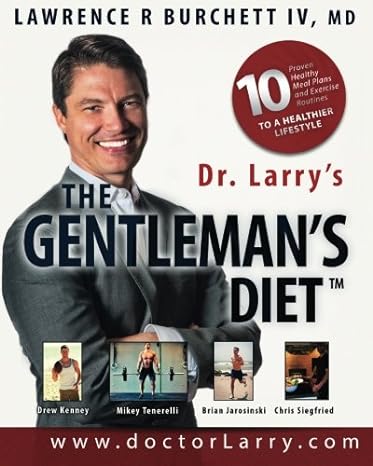Can You Gain 5 Lbs. on Thanksgiving?

[cs_content][cs_section parallax=”false” separator_top_type=”none” separator_top_height=”50px” separator_top_angle_point=”50″ separator_bottom_type=”none” separator_bottom_height=”50px” separator_bottom_angle_point=”50″ style=”margin: 0px;padding: 45px 0px;”][cs_row inner_container=”true” marginless_columns=”false” style=”margin: 0px auto;padding: 0px;”][cs_column fade=”false” fade_animation=”in” fade_animation_offset=”45px” fade_duration=”750″ type=”2/3″ style=”padding: 0px;”][x_author title=”About the Author” author_id=””][x_custom_headline level=”h2″ looks_like=”h3″ accent=”false”]Can You Gain 5 Pounds on Thanksgiving?[/x_custom_headline][cs_text class=”cs-ta-justify”]Written by Dr. Larry
[dropcap]“O[/dropcap]h man. I put on 5 pounds on Thanksgiving. That turkey and stuffing sure fattens me up.”
But is that really true? If you pig out on 1 day (I’m not talking letting it go for a week or a month, but just a day) can you really put on not 5 pounds of fat? Or even 2 or 3?
No. No you can’t. That’s right—I’m not just saying probably. I’m saying no way Jose.
But you can certainly put on a few pounds of water weight.
Remember the general rule of fat gain (as opposed to water weight gain)—that 1 pound of fat is about 3500 calories. So if you maintain your steady weight at 2000 calories daily, then you’d have to consume 500 extra calories (500 + 2000 = 2500 total daily ) for 7 days to get just 1 pound.
That’s 3500 extra calories in 1 day for 1 pound of fat, or about 5500 calories total. For 1 pound. In a day.
2 Pounds in one day would be 9000 calories. That’s insane. I don’t think most of us could do that even if we were in a pie eating contest with Lardass from Stand By Me for 18 hours and the grand prize was a Lambo.
[/cs_text][x_video_embed no_container=”false” type=”16:9″][/x_video_embed][cs_text]
Then Why Do I Gain Weight After a Holiday Meal?
So, what happens when the scale goes up? Is it possible to gain weight (not fat) after a day of excess?
For sure. What’s happening there? The short answer is salt. You eat salt, your body retains water. More specifically, when you eat excess salt, your kidneys keep the sodium in your cells and body balanced by holding onto water. Imagine salt is like blue dye, and your kidneys try to keep your cells and body a clear light blue. When you take in more blue dye and the blue gets darker, even too dark—how are your kidneys going to get it back to light blue? They are going to add water to dilute the blue dye. More water, blue dye gets lighter and more clear.
And depending on how much salt you pounded, that may be pounds of water. Like 3-5, big guy. Nice work.
Or maybe you weighed yourself after Thanksgiving before you pooped.
It’s normal for someone’s weight to fluctuate several pounds in a day. Again, mainly based on water (how hydrated you are) and how much food and poop you have in your guts.
So. What Do You Recommend We Eat During Thanksgiving?
I’m glad you asked, I do love giving my opinion. You know, I used to tell people to try to eat in moderation, fill up on a bunch of vegetables, maybe curb other meals, and lift heavy before the big meal, with a walk afterwards.
Now I’m like—just enjoy the meal, dude. Seriously. Don’t be nuts about food. One day is not going to ruin anyone’s diet, in itself. Do the calorie math if you don’t believe me. And don’t challenge LardAss to any pie eating contests. Although pumpkin pies are delicious, I must say.
BUT. BUT BUT BUT. The thing you have to be most careful of—and we discuss this in the video—is Thanksgiving day of indulgence turning into a week of overeating, turning into a 6 week marathon of calorie pounding gluttony from Thanksgiving to Christmas. If you can do a day then get back to a sensible diet, fine. But if one day turns into one month—“you’re stewed, Buttwad.” (anyone, name that movie?).
Enjoy the holidays, especially the good food. Stay on track the rest of the holiday season.
Movie reference: Chet, Weird Science.
[/cs_text][x_gap size=”50px”][/cs_column][cs_column fade=”false” fade_animation=”in” fade_animation_offset=”45px” fade_duration=”750″ type=”1/3″ style=”padding: 0px;”][x_widget_area sidebar=”sidebar-main” ][/cs_column][/cs_row][cs_row inner_container=”true” marginless_columns=”false” style=”margin: 0px auto;padding: 0px;border-style: solid;border-width: 1px;”][cs_column fade=”false” fade_animation=”in” fade_animation_offset=”45px” fade_duration=”750″ type=”1/1″ style=”padding: 0px;”][cs_text]
Featured Content
[/cs_text][/cs_column][/cs_row][/cs_section][cs_section parallax=”false” separator_top_type=”none” separator_top_height=”50px” separator_top_angle_point=”50″ separator_bottom_type=”none” separator_bottom_height=”50px” separator_bottom_angle_point=”50″ style=”margin: 0px;padding: 45px 0px;”][cs_row inner_container=”true” marginless_columns=”false” style=”margin: 0px auto;padding: 0px;”][cs_column fade=”false” fade_animation=”in” fade_animation_offset=”45px” fade_duration=”750″ type=”1/1″ style=”padding: 0px;”][ess_grid alias=”featured_content”][/cs_column][/cs_row][/cs_section][/cs_content]


